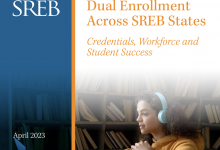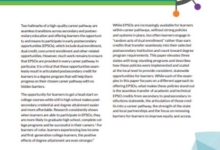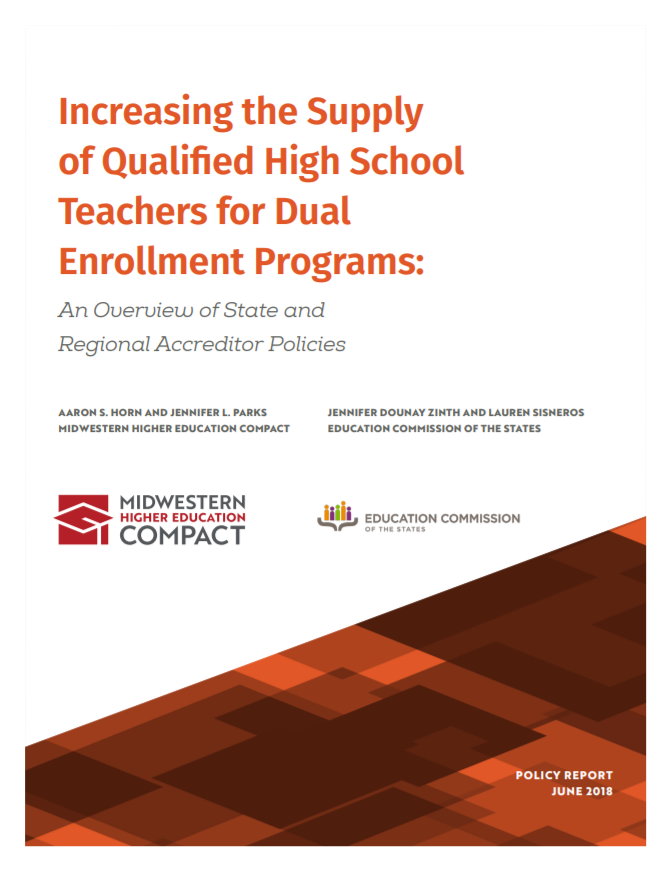Dual enrollment programs allow high school students to simultanenously earn college and high school credit, decreasing the cost of postsecondary education for students. But dual enrollment teacher qualifications, which are often dictated by state higher education systems or regional accrediting bodies, can slow the availability of dual credit opportunities. To strengthen the pipeline of qualified dual credit instructors, states have adopted new strategies to help teachers meet these qualifications.
This report from the Midwestern Higher Education Compact and the Education Commission of the States summarizes state policies for dual enrollment instructor qualifications, the faculty qualification policies of regional accreditation organizations, and state strategies that aim to bolster graduate education programs and encourage teachers to complete relevant graduate coursework. The report outlines seven state strategies to increase the supply of qualified high school teachers for dual enrollment programs, some of which are incentivizing professional development through teacher programs, offering financial aid for high school instructors to complete graduate credits, and utilizing alternative course delivery models to facilitate the completion of graduate credits.







